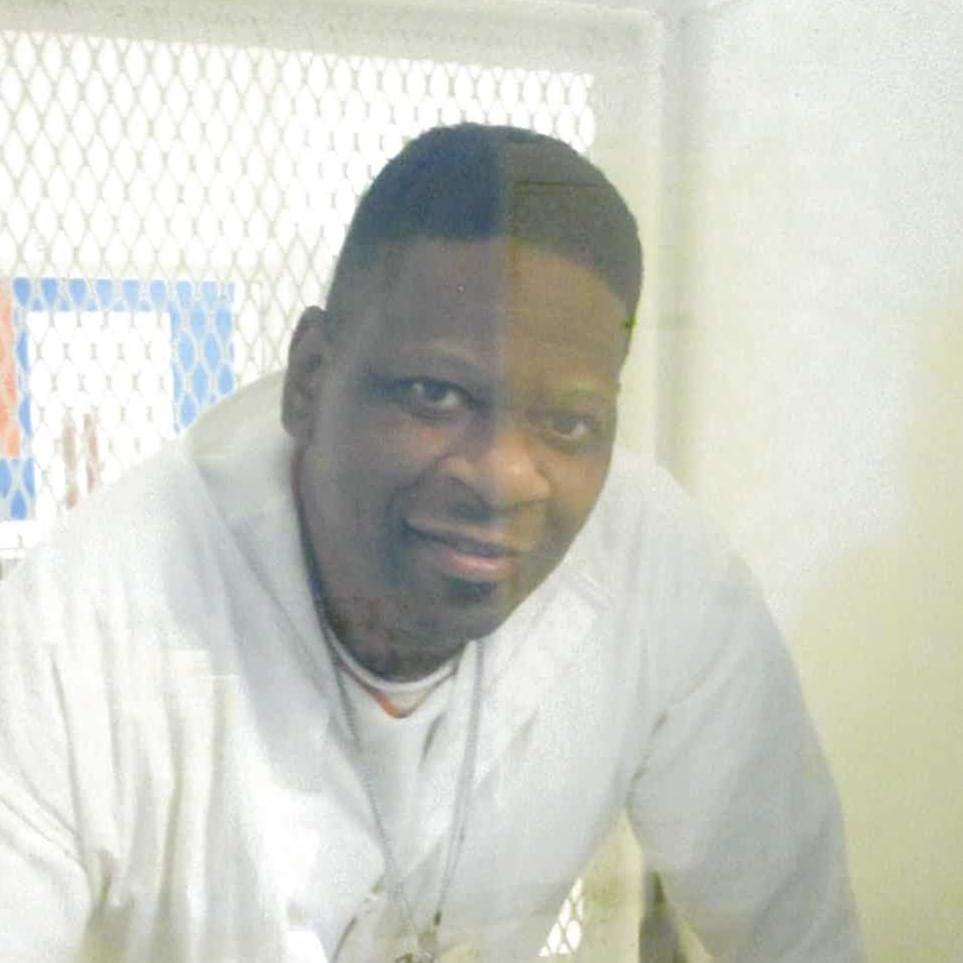
On Friday, October 4, the Supreme Court agreed to hear arguments in Gutierrez v. Saenz, a case regarding death-sentenced Texas prisoner Ruben Gutierrez’s ability to sue the state for DNA testing in support of his innocence claim. The Court had issued a stay to Mr. Gutierrez on July 16, just twenty minutes before his scheduled execution. Mr. Gutierrez was convicted and sentenced to death in 1999 for the murder and robbery of an 85-year-old woman but has long maintained his innocence. Forensic evidence from inside the trailer where the killing occurred has never been tested for DNA, but the state has refused Mr. Gutierrez’s testing requests. The Court will now decide whether the Fifth Circuit was correct when it ruled that Mr. Gutierrez did not have standing to sue Texas over its refusal to give him access to DNA testing. The Court will likely hear Mr. Gutierrez’s case next spring.
Mr. Gutierrez was convicted and sentenced to death for the murder of Escolastica Harrison, an elderly manager of a trailer park who kept over $600,000 in her home due to her mistrust of banks. Mr. Gutierrez admitted to participating in planning the robbery but said he stayed outside the trailer and did not know that Rene Garcia and Pedro Gracia, his codefendants, would kill her. Rene Garcia was sentenced to life in prison while Pedro Gracia remains at large. Mr. Gutierrez’s legal team argues that “no physical or forensic evidence connects him to the crime,” and his conviction was “based on a false confession elicited after police threated to arrest his wife and take away their children, and on an unreliable eyewitness who could not even identify Mr. Gutierrez in the courtroom at trial.”
For over a decade, Mr. Gutierrez has sought DNA testing of crime scene evidence, including bloodstains, scrapings from Ms. Harrison’s fingernails, and hair wrapped around her finger. If DNA testing showed that Mr. Gutierrez was not present in the trailer, he could still be convicted of murder under Texas’ law of parties,1 but it would support his argument that he did not actually kill, intend to kill, or anticipate a killing — which would theoretically bar the death penalty in his case. However, courts denied his requests under Texas’ unusually strict post-conviction DNA statute, which only allows for testing when a person can prove that he would not have been convicted if the DNA testing produced exculpatory results. The statute does not allow DNA testing when the results would only affect the person’s death sentence. Mr. Gutierrez’s attorney Shawn Nolan called this requirement a “catch-22.”
After his requests were denied under the DNA statute, Mr. Gutierrez brought a section 1983 federal lawsuit arguing that the statute had unconstitutionally denied him due process. Texas law guarantees death-sentenced prisoners the right to file post-conviction petitions showing that they are not eligible for the death penalty — but they cannot use DNA to do so because of the statute’s limited applicability. A federal district court agreed with Mr. Gutierrez and ruled that the limits of the DNA statute made that right “illusory,” a “meaningless ritual” that violated procedural due process.

Rodney Reed
Mr. Gutierrez’s legal arguments closely track those of Rodney Reed, a death-sentenced prisoner who also brought a section 1983 lawsuit against Texas officials arguing that the state’s DNA statute had denied him due process. Mr. Reed’s claim focused on the statute’s strict chain-of-custody requirements for evidence, which he could not meet because prosecutors had mishandled and potentially corrupted the evidence. The state argued that Mr. Reed did not have standing, a legal concept which refers to a person’s right to bring a lawsuit. A plaintiff has standing if he can prove an injury, that the injury can be traced to the defendant’s conduct, and that a favorable ruling from the court will likely remedy the injury. In 2023 the Supreme Court sided with Mr. Reed and ruled that he did have standing because he was injured by the denial of DNA testing, the injury could be traced to the state prosecutor’s behavior, and a court judgment finding that the DNA statute had violated Mr. Reed’s due process rights would likely remedy his injury by inducing the state prosecutor to grant access to the evidence for testing. Therefore, Mr. Reed could proceed with his legal effort to seek DNA testing. Several other federal circuit courts have since applied this ruling in favor of death-sentenced prisoners bringing lawsuits alleging their rights were violated.
However, in Mr. Gutierrez’s case, the Fifth Circuit Court of Appeals reversed the district court and ruled that he did not have standing. The court agreed that Mr. Gutierrez had been injured by the state’s denial of DNA testing but departed from Reed and the other circuit rulings on the third requirement of a likely remedy. Where the Supreme Court assumed that a state prosecutor would authorize DNA testing in response to a court order in Mr. Reed’s favor, the Fifth Circuit dove into the facts of Mr. Gutierrez’s case and concluded that the state prosecutor in his case might nevertheless refuse to follow the court’s order. In other words, the Fifth Circuit denied Mr. Gutierrez the opportunity to pursue his challenge to a potentially unconstitutional statute on the reasoning that an order finding the statute unconstitutional was not likely to provide him with a remedy.
Judge Stephen A. Higginson dissented from the Fifth Circuit’s ruling because he did “not see a meaningful distinction from Reed.” He wrote:
“Like Reed, Gutierrez filed suit against the appropriate local prosecutor and made a similar claim regarding Texas’s DNA testing regime. While I appreciate the majority’s careful tracing of the state-court case history and fair inquiry into what the named state prosecutor might or might not do, I do not perceive that the Supreme Court contemplated this nuance and distinction. Instead of conducting a fact-specific inquiry and delving into what District Attorney Goertz himself would do, the Court determined that a declaratory judgment invalidating Texas’s DNA testing procedure would significantly increase the likelihood that the state prosecutor would grant access to the requested DNA testing.”
The Supreme Court granted certiorari to Mr. Gutierrez on the question of whether, under its ruling in Reed, the standing requirement includes a “particularized determination” of what the “specific state official” would do “following a favorable declaratory judgment.”
Mr. Gutierrez’s case illustrates some of the procedural hoops people on death row must jump through to pursue innocence claims. He sought DNA testing of key crime scene evidence under a state law, but the state fought his efforts and the state law itself limited his options. Today Texas requires DNA testing for all items with biological material when the state pursues the death penalty — but state officials often refuse to apply that principle to older cases. “If this crime were committed today, DNA testing of these items would have already happened, and Gutierrez never would have been sentenced to death,” his attorneys argue in their Supreme Court petition. He was then forced to file a federal lawsuit, which state officials challenged his very authority to bring. Under Supreme Court precedent, an actual innocence claim does not save a person from execution—the prisoner must show an independent constitutional violation in the legal process. Despite strong forensic evidence of innocence, Marcellus Williams was executed in Missouri on September 24, and Robert Roberson faces execution on October 17 in Texas despite experts saying no crime ever occurred.
The Supreme Court extended Mr. Gutierrez’s stay of execution while it considers his case. This was not the first stay for Mr. Gutierrez; in 2020, the Court intervened an hour before his scheduled execution because Texas had refused to allow a chaplain to accompany him into the execution chamber. The current stay came just 20 minutes before the execution, as Mr. Gutierrez was about to be led to the chamber. “He was visibly emotional,” said prison spokeswoman Amanda Hernandez. “He turned around to the back of the cell, covered his mouth. He was tearing up, speechless. He was shocked.”
Leah Roemer, Hispanic Heritage Month: Leonel Herrera and the “Agony of Doubt,” Death Penalty Information Center, September 19, 2024; Staff, Supreme Court grants Texas man a stay of execution just before his scheduled lethal injection, Associated Press, July 18, 2024; Juan A. Lozano, Delay of Texas death row inmate’s execution has not been the norm for Supreme Court, experts say, Associated Press, July 17, 2024; Kayla Guo, Supreme Court to review death penalty appeal challenging Texas’s DNA testing law, The Texas Tribune, July 16, 2024; Michelle Pitcher, Texas Plans to Execute Man After Courts Refuse DNA Tests, Texas Observer, July 15, 2024; Gutierrez v. Saenz, Brief in Opposition, July 9, 2024; Pooja Salhotra, U.S. Supreme Court rejects Texas death row inmate’s petition, The Texas Tribune, July 2, 2024; Gutierrez v. Saenz, Petition for Writ of Certiorari, June 25, 2024; Gutierrez v. Saenz, 93 F.4th 267 (5th Cir. 2024); Tex. Code Crim. Proc. Art. 64.03 (2023); Reed v. Goertz, 598 U.S. __(2023); Juan A. Lozano, US Supreme Court halts Texas execution over clergy question, Associated Press, June 16, 2020; Jolie McCullough, U.S. Supreme Court halts Texas execution of Ruben Gutierrez during legal fight over religious advisers’ access to death chamber, The Texas Tribune, June 16, 2020.
-
Texas’ law of parties, one of the most expansive felony murder statutes in the country, holds that during a conspiracy to commit one felony, if a conspirator commits another felony in furtherance of the conspiracy, all co-conspirators are guilty of that second felony regardless of their intent. A person can only be sentenced to death under the law of parties if the second or “predicate” felony is a murder, and the jury finds beyond a reasonable doubt that that person actually caused the death, intended to cause the death, or anticipated the death.


